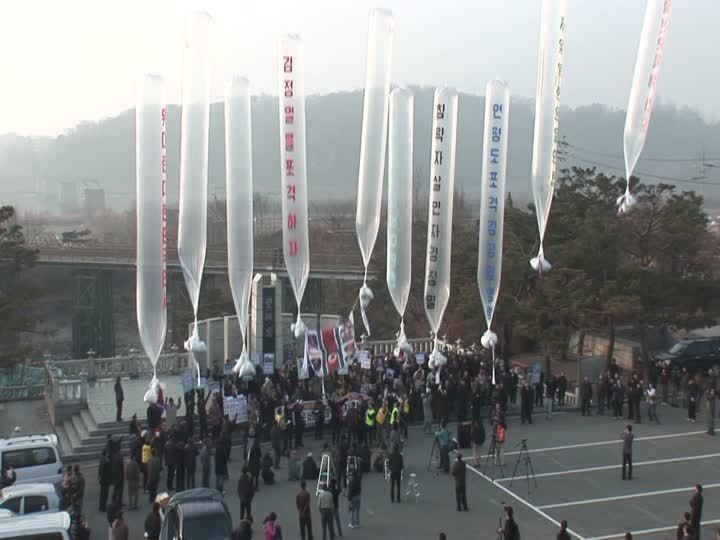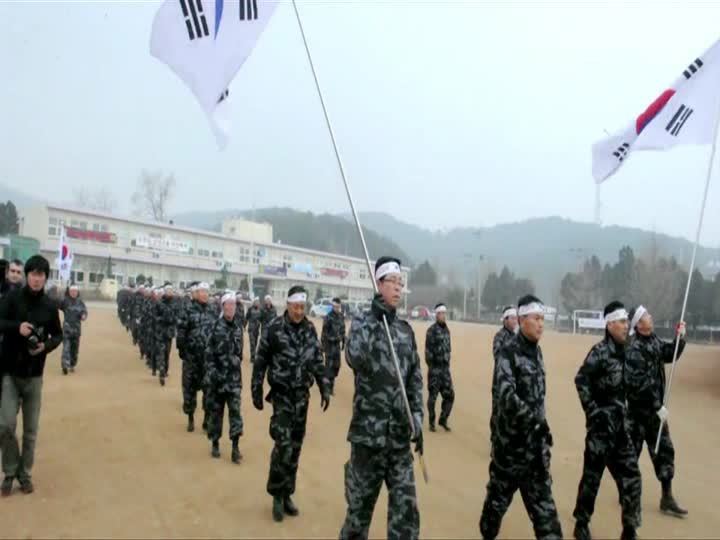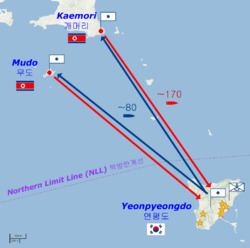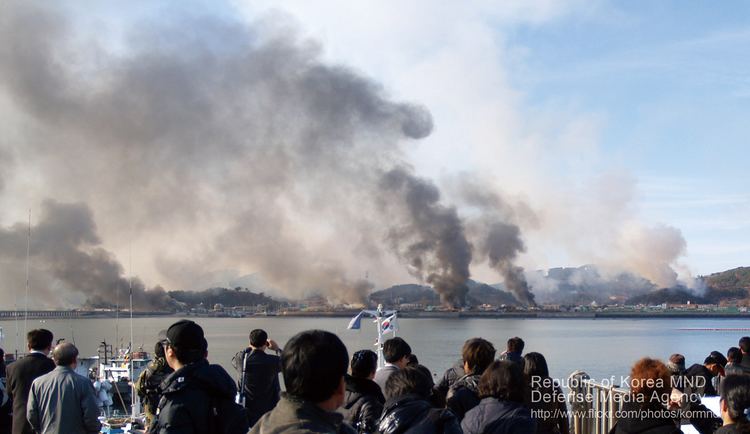Date 23 November 2010 | ||
 | ||
South Korean claim
5–10 killed and 30 wounded
North Korean claim
None 2 dead
19 wounded
2 civilians killed
3 civilians wounded Results ROK civilian evacuation of Yeonpyeong., Tensions increased between the two countries Similar ROKS Cheonan sinking, Second Battle of Yeonpyeong, Korean War, Battle of Daecheong, 1996 Gangneung submarin | ||
Dragonfly visits the island bombardment of yeonpyeong by lyangkim
The bombardment of Yeonpyeong was an artillery engagement between the North Korean military and South Korean forces stationed on Yeonpyeong Island on 23 November 2010. Following a South Korean artillery exercise in waters in the south, North Korean forces fired around 170 artillery shells and rockets at Yeonpyeong Island, hitting both military and civilian targets.
Contents
- Dragonfly visits the island bombardment of yeonpyeong by lyangkim
- Background
- Engagement
- Timeline
- Casualties and damage
- Political and financial impact
- Military responses
- Speculation on North Korean motives
- International reactions
- References

The shelling caused widespread damage on the island, killing four South Koreans and injuring 19. South Korea retaliated by shelling North Korean gun positions. The North Koreans subsequently stated that they had responded to South Korean shells being fired into North Korean territorial waters.

The incident caused an escalation of tension on the Korean Peninsula and prompted widespread international condemnation of the North's actions. The United Nations declared it to be one of the most serious incidents since the end of the Korean War, and by December 18 former UN ambassador Bill Richardson said tensions had escalated to become "the most serious crisis on the Korean peninsula since the 1953 armistice which ended the Korean War."

Background

A western maritime line of military control between the two Koreas was established by United Nations Command (UNC) in 1953, called the Northern Limit Line (NLL). According to Time, "The North does not recognize the border that was unilaterally drawn by the United Nations at the close of the 1950–53 Korean War." Under the provisions of the armistice, five Northwest Islands are specifically designated to remain under the jurisdiction of the United Nations. The countries' western maritime boundary has long been a flash point between the two Koreas.
North Korea did not dispute or violate the line until 1973. The NLL was drawn up at a time when a three-nautical-mile territorial waters limit was the norm, but when in the 1970s a twelve nautical mile limit became internationally accepted, the implementation of the NLL prevented North Korea, in areas, from accessing, arguably actual or prospective, territorial waters. Later, after 1982, it also hindered North Korea establishing a United Nations Convention on the Law of the Sea Exclusive Economic Zone to control fishing in the area.
In 1999, North Korea drew up their own line, the "West Sea Military Demarcation Line" which claims a maritime boundary farther south that encompasses valuable fishing grounds (though it skirts around South Korean-held islands such as Yeonpyeong). This claim is not accepted by either South Korea or the United Nations Command.
The United Nations Command perspective remained unchanging, explaining that the NLL must be maintained until any new maritime military demarcation line could be established through the Joint Military Commission on the armistice agreement.
In an effort to assert its territorial claims, North Korea has pursued a strategy of challenging South Korean control of the waters south of the NLL. It has made several incursions that have sparked clashes between the two sides, notably a naval battle near Yeonpyeong island in 1999 as well as another engagement in the same area in 2002. Although there were no further serious clashes for a time, in 2009 increasing tensions along the disputed border led to a naval battle near the island of Daecheong, and accusations that a North Korean submarine had sunk the South Korean corvette Cheonan off Baengnyeong Island in March 2010.
Days before the incident, the North Korean government revealed their new uranium enrichment facility, prompting the South Korean government to consider requesting that the United States station tactical nuclear weapons in South Korea for the first time in 19 years. On the same day, South Korea and the United States began the annual Hoguk exercise, a large-scale military drill involving the South Korean and US militaries. The 2010 exercise involved 70,000 troops from all four branches of the South Korean military, equipped with 600 tracked vehicles, 90 helicopters, 50 warships, and 500 aircraft. The United States contributed its 31st Marine Expeditionary Unit and the Seventh Air Force to the land and sea elements of the exercise.
It had originally been intended that the United States Navy and Marine Corps would participate in a joint amphibious exercise in the Yellow (Western) Sea, west of South Korea. However, the US pulled out of the joint exercise citing "scheduling conflicts", though South Korean observers suggested that the real reason was the opposition of China, which regards a large portion of the Yellow Sea as its own territory. The North Korean government regards the exercises as preparation for a combined arms attack on the North.
Engagement
On the morning of 23 November 2010, North Korea reportedly "wired a complaint [to the South] ... asking whether (the [Hoguk] exercise) was an attack against the North." It warned that it would not tolerate firing in what it regarded as its territorial waters. South Korean forces went ahead with a live-fire exercise in waters off Baengnyeong Island and Yeonpyeong Island within South Korean-held territory.
According to a South Korean military official, shells fired as part of the exercise were directed at waters in the south, away from North Korea. A Marine colonel on the island indicated the shells had been fired towards the southwest. South Korean Minister of National Defense, Kim Tae-young, said the firing was not part of the Hoguk exercise, but was a separate routine monthly drill carried out 4–5 km away from the NLL, contrary to previous media reports. The usual firing range is 40 kilometres (22 nmi) by 20 kilometres (11 nmi) in size and runs parallel to the NLL to the south-west of Yeonpyeong Island.
At 14:34 local time, North Korean coastal artillery batteries on Mudo, and a recently redeployed 122-mm MRLs at Kaemori, in North Korea's Hwanghae Province, opened fire on the island of Yeonpyeong. The bombardment took place in two waves, from 14:34 to 14:55 and again from 15:10 to 15:41. Many of the shells landed on a military camp, but others hit the island's principal settlement, destroying numerous homes and shops, and starting fires. About 108 shells were fired total, according to a North Korean defector who had served in an artillery battery.
Three of the six K9 Thunder 155mm guns stationed on Yeonpyong returned fire, while two were damaged and one blocked by a dud shell. South Korean artillery fired 80 shells in total. Initially, the South Koreans targeted barracks and command structures on Mudo, but began firing at the MRL's at Kaemori about thirteen minutes later.
South Korean KF-16 and F-15K jets were also scrambled to the area, though they did not engage North Korean targets. South Korean counterstrikes ended at 16:42. It was the first artillery battle to take place between North and South Korea since the 1970s and was seen as one of the most serious attacks by the North on the South since the 1953 Armistice.
With power on Yeonpyeong knocked out and several fires breaking out as a result of the North Korean shelling, the South Korean military ordered civilians to evacuate to bunkers.
Timeline
(All times in Korea Standard Time: UTC+9.)
08:20: North sends a telex message requesting a halt to the South's artillery training exercise. 10:00: South starts the artillery training exercise. 14:30: North deploys five MiG-23ML fighters from the 60th Regiment at Pukchang. 14:34: North starts firing shells (around 150, of which about 60 land on Yeonpyeong) 14:38: South conducts emergency sorties with two KF-16 fighters. 14:40: South deploys four F-15K fighters. 14:46: South conducts additional emergency sorties with two KF-16 fighters. 14:47: South fires back with the first round of K-9 howitzers (50 shells). 14:50: South issues a 'Jindogae Hana (Jindo Dog 1)' alert, the highest military alert given for a local provocation. 14:55: North stops firing temporarily. 15:12: North starts firing for the second time (20 shells, all of which landed on the island). 15:25: South resumes firing back with K-9 howitzers (30 shells). 15:30: South telexes the North's military general level talk representative requesting an immediate halt to artillery shelling. 15:40 – 16:00: The South's Joint Chiefs of Staff Han Min-gu and USFK Commander Walter L. Sharp have a video conference (a review of cooperative crisis management). 15:41: North stops firing. 16:30: First military casualty reported. 16:35 – 21:50: Foreign and National Security representatives have a meeting. 16:42: South stops firing. 18:40: Lee Hong-gi, the South's Joint Chief of Staff Director of Operations, holds a press briefing. 19:00: North Korea's Supreme Command of the Korean People's Army releases a statement labelled "Our Army is Making No Empty Talk" publicized through KCNA. 20:35 – 21:10: South Korean President Lee Myung-bak meets with his Joint Chief of Staff.Casualties and damage
The shelling caused a number of casualties among South Koreans living on Yeongpyeong. Two South Korean marines, Hasa (Staff Sergeant) Seo Jeong-wu and Ilbyeong (Lance Corporal) Moon Gwang-wuk, were killed. Six other military personnel were seriously wounded, and ten were treated for minor injuries. Two construction workers, Kim Chi-baek, 61, and Bae Bok-chul, 60, were also killed.
Most of the islanders were evacuated in the aftermath of the shelling. Around 1,500 of the 1,780 people resident on the island were taken aboard fishing boats and government vessels, with many of them being taken to Incheon on the mainland. The Incheon city authorities sent 22 fire engines and ambulances to the island, along with firefighters and paramedics, to help with the recovery and relief effort. 2,000 boxes of emergency relief materials and more than 3,500 relief kits and boxes of food were sent to help residents recover.
The attack started widespread fires on the island. According to the local county office, 70 percent of the island's forests and fields were burned and 21 houses and warehouses and eight public buildings were destroyed in the bombardment. Some of the public buildings were formerly military structures, leading the South Korean military to believe the attack was planned from old maps.
North Korea states that it suffered no military casualties. However, Lee Hong-gi, the Director of Operations of the South Korean Joint Chiefs of Staff (JCS), claimed that as a result of the South Korean retaliation "there may be a considerable number of North Korean casualties". A North Korean defector who had served in an artillery battery, however, stated that the South had likely failed to destroy the North Korean artillery batteries due to its slow response. South Korean media reported that 5–10 North Korean soldiers had been killed and 30 wounded, and the National Intelligence Service suggests damage to North Korean troops had been considerable during the South Korean counter-battery fire. Notably, however, there is little to no evidence in support of South Korean casualty claims.
Political and financial impact
The South Korean government called the attack a "clear armed provocation." It suspended interchanges with the North, cancelling inter-Korean Red Cross talks and banning visits to the jointly operated Kaesong Industrial Region.
The main South Korean political parties condemned the North's attack. A spokesman for the ruling Grand National Party said: "It is impossible to hold our rage toward the North's shelling of the Yeonpyeong Island. North Korea must be held accountable for all the losses." The chairman of the opposition Democratic Party urged the North Koreans to "stop all provocation that threaten the peace and stability of the Korean Peninsula". He called for "the two Koreas to begin talks to prevent the situation from worsening" and urged the government to protect the peace and safety of South Koreans.
On 25 November, South Korea's defense minister, Kim Tae-young, announced his resignation after he was criticized for leading a response to the incident considered too passive by members of both the ruling and opposition political parties.
The North Korean news agency KCNA released a Korean People's Army communique stating that North Korea responded after the South had made a "reckless military provocation" by firing dozens of shells into North Korean territorial waters around Yeonpyeong Island from 13:00, as part of "war maneuvers". It warned that "should the south Korean puppet group dare intrude into the territorial waters of the DPRK even 0.001 mm, the revolutionary armed forces of the DPRK will unhesitatingly continue taking merciless military counter-actions against it." The South Korean Deputy Minister of Defense acknowledged that South Korean artillery units had been carrying out live-fire exercises, but denied that the shots had crossed into the North Korean sea area.
Four days after the shelling, North Korea's KCNA said about the death of civilians that, "[i]f that is true, it is very regrettable, [...] [b]ut the enemy should be held responsible for the incident as it took such inhuman action as creating 'a human shield' by deploying civilians around artillery positions and inside military facilities."
The North Korean attack had a global impact on the financial markets. Several Asian currencies weakened against the euro and U.S. dollar, while at the same time Asian stock markets declined. The impact of the shelling on the financial industry led South Korea's central bank, the Bank of Korea, to hold an emergency meeting to assess the impact of the fighting on the markets.
Military responses
President Lee instructed the South Korean military to strike North Korea's missile base near its coastal artillery positions if there were an indication of further provocation. Lee Hong-gi of the JCS told the media that the attack had been a "premeditated, intentional illegal violation of the U.N. Convention, the Armistice Agreement and the inter-Korean non-aggression accord. It is also an inhumane atrocity, in which [North Korea] indiscriminately fired shells into unarmed civilian residential areas." He said that the military had "strengthened our surveillance and monitoring to keep watch on North Korean military activities through close cooperation with the United States. We are closely cooperating to draw up joint response directions."
On 24 November, the US aircraft carrier USS George Washington departed for joint exercises in the Yellow Sea with the Republic of Korea Navy, in part to deter further North Korean military action but also to "send a message" to China.
On 28 November, South Korean news agency Yonhap News said that North Korea had readied surface-to-surface missiles as the United States and South Korea began military drills.
One year after the event the South Korean military presence on the island had been substantially increased with the deployment of more K-9 howitzers, K-10 automatic ammunition re-supply vehicles, 130-millimeter, 36-round, truck-mounted Kuryong multiple rocket launchers and AH-1S Cobra attack helicopters. On 19 May 2013 the South Korean Joint Chiefs of Staff announced that "dozens" of Spike NLOS missiles had been deployed on Baengnyeong Island and Yeonpyeong Island.
Speculation on North Korean motives
North Korea's motives for the attack were unclear and were the subject of widespread speculation in the South and elsewhere. Officially, the North Korean Foreign Ministry stated the North Korean bombardment was retaliation due to South Korea's shelling into sea that North Korea claims as its own. But some experts suggested that it was at least partly related to Kim Jong-un's appointment as the designated successor to Kim Jong-il, which is believed to have caused tensions within the North Korean leadership. Robert Kelly, an assistant professor at Pusan National University in South Korea, says that Seoul's increasing global stature may have provoked Pyongyang. "My primary guess is that this is a response to the recent international prestige taken by South Korea at the G20. The G20 highlighted North Korean backwardness in the same way that it highlighted that South Korea was a partner of this global elite organization, setting international rules and the North Koreans don't like this", he said. It has also been suggested that the attack was linked to the North's need for food aid.
The JoongAng Ilbo newspaper suggested that the attack had been ordered by Kim Jong-il himself. Kim and his son were reported to have visited the Kaemori artillery base, whence many of the North Korean shells were fired, the day before the attack. The Kims had visited a nearby fish farm on 22 November in the company of various senior military figures. According to a source quoted by the newspaper, "Firing artillery across the Northern Limit Line at sea is difficult without a direct order from Pyongyang’s highest authorities; firing inland would have been impossible without the will of Kim Jong-il."
International reactions
Images of the shelling were widely disseminated by media and across the internet. The sight of burning houses and plumes of smoke prompted international reaction.
